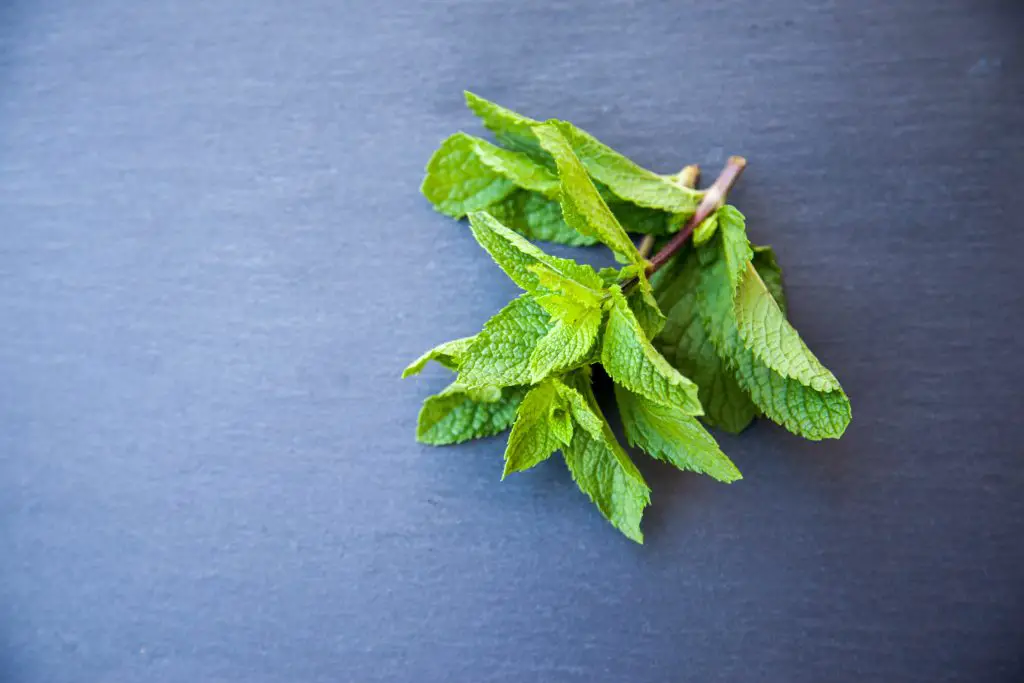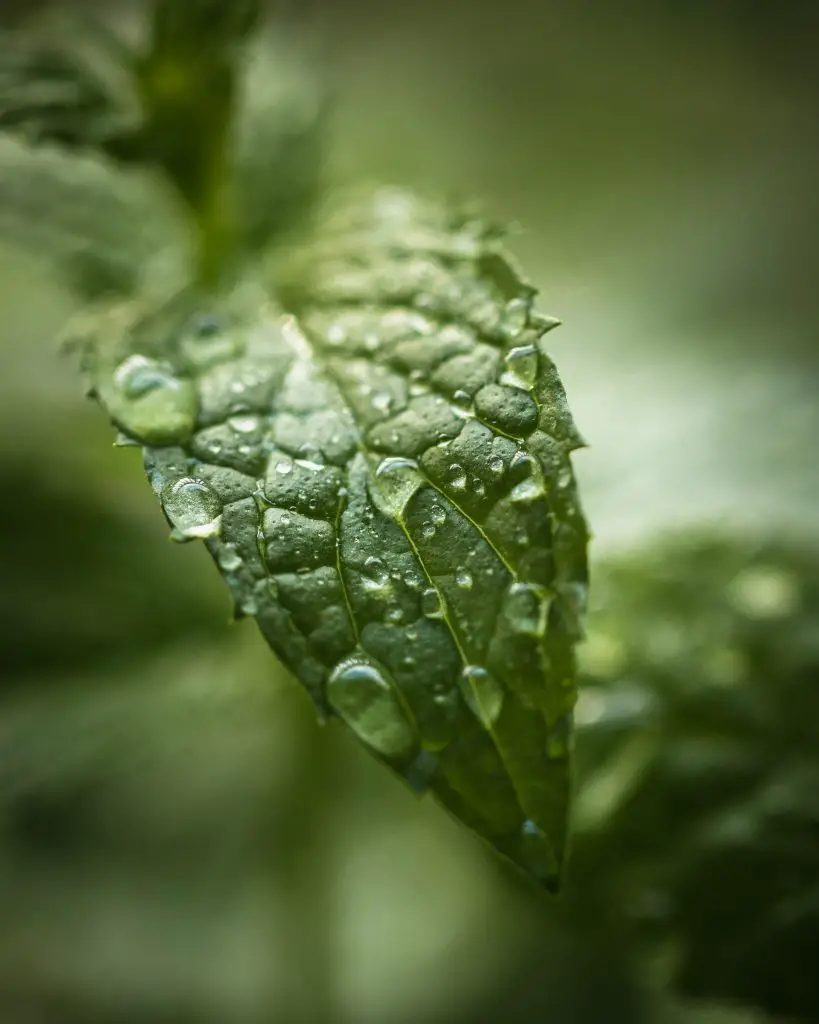Why Has My Mint Stopped Growing? Mint is a great herb to grow because it is one of the most resilient plants you can find. So if your mint has suddenly stopped growing you might want to take a look at your environment to see if anything is off and try and fix it.
The most common symptoms associated with a mint plant drying are yellowing of the leaves, drying up of the plant becoming woody and sparse, and generally producing leggy growth habits.
The most common cause of these symptoms are the following:
Insufficient watering: Mint can very easily become too dry. This is because not only does it need frequent waterings, but when you do water, you need to give it quite a bit, at least an inch of water at a time.
The mint is in a position that is too hot and sunny: The mint will wither in the hot sunlight. It will appear to be drying up and becoming brown in the bright light of the sun. This is entirely normal in mint plants, and as long as the plant has enough water it will survive this withering.
The mint has insufficient drainage: If the mint plant’s roots are not properly maintained, the roots rot. This means that while mint generally likes moist conditions the location that the plant is grown in must have sufficient drainage to ensure that the plant’s roots do not sit in water indefinitely. The common symptoms of that are yellowing of the leaves.
The mint has become pot bound: Due to the mint plants invasive nature many people grow them in pots as they can take over your garden. However, over time that can become pot bound. Common symptoms of this are the yellowing and withering of leaves.
The mint has too much fertilizer: Fertilizer is needed in order to promote healthy, vibrant, and attractive-looking plants. However, adding too much fertilizer can cause the plant to become leggy.

How Save Your Mint Plant From Drying?
The solutions to correct these problems are relatively easy to implement which means that you can have the mint performing well in most cases within a few weeks.
Underwatering Mint
Mint is generally not a fussy plant and will tolerate a range of conditions, from full sun to full shade. However, to perform at its best, it prefers shadier locations that get filtered light or morning sun. One of the reasons for this is that these locations tend to contain more water and retain it for longer periods.
In locations that receive the afternoon sun, the plants will generally require you to adjust the frequency of your watering to maintain the correct moisture level. The extent of this adjustment will depend upon the time of year and the specific climate where you live. In hot climates, you may need to water every few days.
To improve moisture retention and reduce the need for frequent watering it is important to add a thick layer of mulch, 2 to 4 inches thick. This will help preserve any moisture that is in the soil and keep the moisture content high.
Additionally, add compost to the soil as it has excellent water holding capacity. If you are using pots you can also consider the addition of hydrogels (water crystals) which will also improve water retention. If you want to learn more about the effectiveness of them click here.
However, irrespective of the additional measures put in place it is still important to carefully track of the soil moisture by testing using a moisture meter which is relatively cheap and can be purchased from Amazon.
How To Save Mint Plants With Root Rot
As mentioned above Mint plants with Root Rot will produce yellow leaves with a wilted. Root rot is the decay of plant roots due to infection with fungi or bacteria that live in the soil. The fungi can actually invade the root tissue, causing the roots to rot.
The bacteria, on the other hand, can create a slimy substance that coats the roots, which can block the movement of nutrients and water in and out of the plant. In either case, the roots are suffocated and the plant above ground looks sickly.
If you are unsure if root rot is the problem and the plant is being grown in a pot you can put the plant out to inspect the roots. A healthy plant will have white roots whereas one that is affected by root rot will have a dark brown coloration.
Root rot is usually caused by poor drainage which occurs because the soils are inherently slow draining due to their composition (ie clay) or in some cases due to compaction. The best way to prevent root rot is to make sure the soil drains well by adding additional drainage holes to pots or amending the soil by adding additional grit and compost.

What To Do If You Have Root Rot Affected Mint Plant
If your mint is infected with root rot, then the damage could already be done. However, here is what you can do to try and save the plant.
You must remove the soil from the plant and try and recycle the plant by dividing it and spraying the plant with a fungicide. The divided plant can then be replanted into a totally new pot or section of the garden that has better drainage.
Saving Mint Plants That Has Become Pot Bound
The symptoms for mint plants becoming pot bound is quite similar to rot root because excess roots can cause drainage issues which can result in root rot over an extended period of time.
The main cause of the plant becoming pot bound is the initial size of the pot size is too small or the plant has simply spent too long in the pot. The signs of the plant becoming pot bound apart from yellowing of the leaves and a general lack of vigor is the pot can start to bulge and roots begin to emerge from the bottom of the pot.
To revive a plant that is pot-bound is pretty straightforward. Remove the plant from the pot and divide it into at least halves or thirds. Transfer the new plants into pots making sure there are a few inches on all sides when the mint is repotted. Using pots that are at least 12 inches across is generally recommended as they do not dry out as fast as smaller pots.
How to Save A Leggy Mint Plant
Mint plants that develop long leggy growth is an indication that the plant is in search of light in most cases. If the mint is in complete shade you may want to relocate the plant to an area with more light.
If you are transplanting it be sure to prune the plant hard once the plant is back in the ground as this will help the plant to quickly regain its shape and start producing luscious leaves again.
The other thing that can cause this issue is the addition of too much fertilizer which can produce excess growth. Mint rarely requires extra fertilizer if it has been planted in rich compost.
Other Potential Causes Of Problems
To ensure that your Mint is producing large volumes of leaves and generally looking lush and healthy, there are a few things that you should generally do.
The first thing is to provide some protection to the plant in winter if you live in a relatively cold climate. While mint is an extremely hardy plant that will survive in temperatures as low as -40°C (-40°F) and can be grown in the US hardiness Zone 4 or higher it will still benefit from having additional straw placed onto it to provide some insulation.
The second thing is to ensure that the mint is not placed in locations where it gets the afternoon sun if you live in a warmer climate where peak temperatures are around 100F.
The third thing is to ensure that the soil is slightly acidic, with a pH of around 6 to 7. This will ensure that the plant is able to access all its nutrients easily. To learn more about adjusting the pH of your soil click here.
Keep the plant looking good, by maintaining a compact bush. Remove any dried-out leaves and weak leggy stems, using pruning shears. Remove any flower buds you see, before they open. If the Mint flowers are allowed to bloom, the Mint can become leggy, as such, prompt bud removal will help the plant to stay more compact.
Related Articles
Can You Grow Mint From Grocery Store Cuttings?
Mint vs Spearmint: What Is The Difference?
Is Catmint Edible? If So, What Is It Used For?
Is Catmint Invasive? Will I Regret Planting It?
